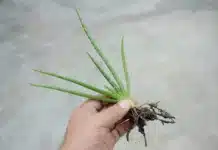When to Fertilize Citrus Trees: A Comprehensive Guide to Ensuring Healthy Growth
Citrus trees, with their aromatic blossoms and vibrant fruits, have become a cornerstone of many gardens. Whether you’re a novice gardener or a seasoned horticulturist, knowing when and how to fertilize citrus trees is key to keeping these plants thriving. Proper fertilization not only enhances the tree’s overall health but also ensures you harvest abundant, sweet fruits each year. In this detailed guide, we will explore the optimal times to fertilize citrus trees, the best fertilizers to use, and how to spot signs that your tree may need extra nutrients. Let’s dig into the essential care tips that will help your citrus tree reach its fullest potential.
Understanding the Nutritional Needs of Citrus Trees
Citrus trees are among the most nutrient-demanding plants you can grow in your garden. They require a regular and well-balanced supply of nutrients to stay healthy and productive. Unlike many other trees, citrus trees have a rapid growth cycle, and their fruits require ample nutrients to develop properly. The main nutrients that citrus trees need are nitrogen, phosphorus, potassium, and magnesium, in addition to trace elements such as iron, manganese, and zinc.
The roots of citrus trees are relatively shallow, which means they have limited access to deep soil nutrients. This is why regular fertilization is crucial to ensure that the tree’s growth remains robust and its fruit production is maximized. If these trees don’t get enough of the nutrients they need, they might show signs of deficiency, such as yellowing leaves, poor fruit quality, or stunted growth. On the flip side, improper fertilization can lead to nutrient burn or other forms of stress. The key to healthy citrus trees is to strike a balance between providing enough nutrients without overwhelming the roots.
How Often Should You Fertilize Citrus Trees?
Fertilizing your citrus trees on a regular schedule ensures they receive a steady supply of nutrients throughout the growing season. But how often should you be fertilizing? The answer depends on several factors, including the age of the tree, the type of fertilizer you’re using, and the climate in which your citrus trees are growing. While some general rules apply, it’s important to adjust the schedule based on the specific needs of your tree.
Spring Fertilization: Kickstart the Growth Cycle

The first application of fertilizer should occur early in the spring. This is the time when your citrus trees are waking up from their winter dormancy and preparing to enter their active growing phase. At this stage, the tree’s roots begin absorbing nutrients again, and the tree starts to push out new growth, including fresh leaves and flowers. Early spring fertilization will help jumpstart this growth phase and ensure the tree has enough energy to produce robust shoots and a healthy canopy.
If you are using a slow-release citrus tree fertilizer, now is the time to apply it. Slow-release fertilizers are designed to break down over time, providing a steady flow of nutrients to the tree throughout the growing season. Be sure to apply the fertilizer evenly around the base of the tree, taking care not to place it too close to the trunk, as this can cause burning. It’s also a good idea to water the tree well before and after applying the fertilizer to ensure it reaches the roots effectively.
Summer Fertilization: Supporting Fruit Production

As the growing season progresses into summer, your citrus trees will begin to form fruit. This is a critical time for fertilization, as the tree needs additional nutrients to support fruit growth and development. By mid to late summer, the tree is using a lot of energy to produce fruit, so another round of fertilization is necessary to keep it strong and healthy.
In the summer, focus on fertilizers that provide extra potassium, as this nutrient is essential for fruit production. Potassium helps citrus trees produce strong, juicy fruits and improves the overall quality of the fruit. Additionally, if you notice that your tree’s leaves are starting to look a little yellow or the growth seems sluggish, you can apply a nitrogen-rich fertilizer to give it a boost. Just be cautious not to over-fertilize, as too much nitrogen can lead to excess foliage growth, which may result in fewer fruits.
Fall and Winter Fertilization: Avoid Overfeeding

When the cooler months arrive, most citrus trees will begin to slow down their growth and may even enter a dormant state in colder climates. This is not the time to feed them heavily, as their nutrient demands decrease significantly. Fertilizing citrus trees in the fall can cause the tree to produce unnecessary growth when it should be resting.
However, if you’re in a mild climate where your tree does not experience true dormancy, you may want to apply a light, low-nitrogen fertilizer in the fall. This will help the tree maintain a healthy root system without stimulating excessive growth. The key here is to avoid using high-nitrogen fertilizers, as they can encourage new growth at the expense of the tree’s natural dormancy.
Timing is Everything: Fertilizing Citrus Trees for Optimal Health
Fertilizing citrus trees at the wrong time can have negative consequences. Too early or too late in the season can result in poor growth, nutrient burn, or stress to the tree. Knowing the right timing for applying citrus tree fertilizer will ensure that your tree receives the nutrients it needs at the correct stage of its growth cycle.
For the best results, apply fertilizers in early spring and again in mid-summer, adjusting for your local climate. Pay close attention to any signs of nutrient deficiencies or excessive growth and adjust your fertilization schedule accordingly. In the following sections, we’ll discuss how to spot these signs and troubleshoot potential issues.
How to Identify Nutrient Deficiencies in Citrus Trees
Just as important as knowing when to fertilize citrus trees is knowing how to identify when your tree is lacking nutrients. Here are some common signs to look for:
ellowing Leaves

One of the most common signs of a nutrient deficiency in citrus trees is yellowing leaves. If the leaves turn yellow but the veins remain green, this typically indicates a nitrogen deficiency. Nitrogen is essential for healthy leaf development and overall growth. If your tree is showing this sign, it’s time to apply a fertilizer high in nitrogen to encourage new leaf growth and restore the tree’s green foliage.
Stunted Growth

If your citrus tree isn’t growing as vigorously as expected, it might be lacking in essential nutrients, such as potassium or phosphorus. These nutrients are vital for root development and fruit production. In cases of stunted growth, a well-balanced citrus tree fertilizer can help remedy the issue by supplying the tree with the nutrients it needs to kickstart growth.
Small or Poor Quality Fruit

Sometimes, a citrus tree will produce fruit that is small, underdeveloped, or of poor quality. This can be a sign that the tree is not receiving enough of the necessary nutrients for fruit development, especially potassium. Potassium is particularly important for fruit ripening and quality. Fertilizing your citrus trees with a potassium-rich formula will help improve fruit size, flavor, and color.
Choosing the Best Fertilizer for Citrus Trees
The right citrus tree fertilizer can make all the difference in your tree’s health and productivity. But with so many options available, how do you know which one is best?
When choosing a fertilizer, look for a formula designed specifically for citrus trees. These fertilizers typically have a balanced mix of macronutrients (nitrogen, phosphorus, potassium) and micronutrients that citrus trees require for healthy growth. In addition to synthetic fertilizers, you can also choose organic options, which are often gentler on the tree and the environment. Organic fertilizers like compost, chicken manure, or fish emulsion can provide slow-release nutrients that nourish the tree over time.
If you want to get the best results, consider using a slow-release granular fertilizer or a liquid fertilizer, depending on your tree’s needs. Liquid fertilizers tend to work faster, but slow-release granules provide longer-lasting results, making them a great option for trees that need consistent feeding throughout the growing season.
Pros and Cons of Fertilizing Citrus Trees
When fertilizing your citrus trees, there are several benefits and some drawbacks to consider. Below is a table summarizing the pros and cons:
| Pros | Cons |
|---|---|
| Supports healthy growth and vibrant foliage | Over-fertilization can cause nutrient burn |
| Increases fruit yield and quality | Excess nitrogen may cause too much foliage growth, reducing fruit production |
| Provides necessary nutrients for sustained tree health | Fertilizer runoff can pollute nearby water sources |
| Enhances the tree’s ability to resist pests and diseases | Improper fertilization timing can stress the tree |
| Stimulates strong root development and fruit production | High nitrogen in fall and winter can disrupt dormancy |
Frequently Asked Questions (FAQs) About Fertilizing Citrus Trees
- How often should I fertilize my citrus trees? Fertilize your citrus trees about 3-4 times a year, including early spring, early summer, and possibly a light application in the fall if you’re in a warm climate.
- Can I fertilize my citrus tree in winter? In most climates, it’s best to avoid fertilizing citrus trees in winter, as they are either dormant or significantly less active during this time. However, light, low-nitrogen fertilization may be appropriate for trees in mild climates.
- What is the best fertilizer for citrus trees? The best fertilizer for citrus trees contains a balanced mix of nitrogen, phosphorus, and potassium with added micronutrients like magnesium, iron, and manganese. Organic options like compost or fish emulsion are also great choices.
- How do I know if my citrus tree needs fertilizer? Common signs that your citrus tree needs fertilizer include yellowing leaves, stunted growth, and poor fruit development. Fertilizing with the right mix of nutrients will help address these issues.
Conclusion: Keep Your Citrus Trees Thriving
Knowing when and how to fertilize citrus trees is essential for keeping them healthy and productive. By following the guidelines in this article, you can ensure that your tree receives the proper nutrients it needs throughout the year. Whether you are looking to increase fruit yield, improve quality, or simply maintain a healthy, thriving tree, understanding the right fertilization schedule is key to success. Always keep an eye out for any signs of nutrient deficiencies, and make sure you choose the right type of fertilizer to meet your tree’s specific needs.
By giving your citrus trees the proper care they deserve, you’ll enjoy an abundant harvest and vibrant trees that will thrive for years to come.


























